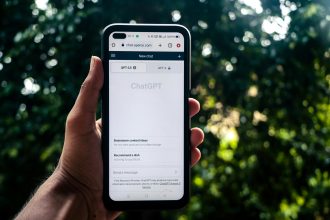To increase personal earnings and liquidate more cash as opposed to being just asset-rich, business owners can consider several strategies:
Optimize Profitability: Focus on improving the efficiency and profitability of business operations. This includes evaluating cost structures, streamlining processes, and identifying high-margin products or services. Using technology and automating where possible can reduce labor and operational costs, increasing take-home profits.
Proper Financial Planning: Schedule regular reviews of financial statements to ensure healthy cash flow management. Engage in budget forecasting and variance analysis to make informed financial decisions. Retained earnings can bolster liquidity if strategically reinvested or allocated to funds that can be liquidated when necessary.
Tax Optimization: Work with a knowledgeable accountant or tax advisor to take advantage of tax deductions, credits, and incentives. Structuring the business entity and distribution method wisely can reduce taxable income and, as a result, increase personal cash take-home.
Diversify Income Streams: Instead of relying solely on one source of income, consider expanding into additional revenue streams or introducing complementary products or services. This diversification can cushion against market fluctuations and provide more cash flow throughout the year.
Effective Inventory and Receivables Management: Efficient management of inventory to avoid overstocking can reduce tied-up capital. Additionally, establish effective receivables management processes to ensure faster collection of payments, which boosts cash inflow.
Establish a Salary or Distribution Plan: Instead of reinvesting all profits back into the business, create a systematic plan to pay yourself a salary or regular distributions. Balancing reinvestment and personal compensation ensures that you benefit directly from the business’s success.
Invest in High Liquidity Assets: Consider channeling excess profits into high-liquidity investment vehicles rather than illiquid assets that may take time to monetize. This allows the business owner to remain asset-light in terms of non-liquid assets but cash-rich.
Financial Cushion or Emergency Fund: Set aside a portion of profits as a safety net. This fund should be easily accessible to cover unexpected expenses without disrupting daily operations, ensuring that the business owner remains financially secure even in tough times.
Seek Efficient Loan Structures: If leveraging debt is necessary, structure loans with favorable terms that don’t overly stretch resources. Interest rates, repayment flexibility, and terms that match cash flows can prevent draining the cash reserves.
Continuous Learning and Skills Development: Stay informed about market trends and financial strategies. Regularly update your skills and knowledge to stay competitive and capable of making the best financial decisions for personal and business growth.
By employing these strategies, business owners can enhance their liquidity while maintaining balanced asset growth, leading to greater financial freedom and flexibility.










2 Comments
This post provides a comprehensive overview of strategies for business owners looking to boost personal earnings while enhancing liquidity. I’d like to add that fostering a strong company culture and effective team dynamics can significantly contribute to improved profitability and cash flow. When employees feel valued and engaged, productivity often increases, leading to better operational efficiency and innovation.
Moreover, investing in employee development not only improves skills but also reduces turnover, which can save costs in the long run. This creates a virtuous cycle: as the team performs better, the business’s profitability increases, enabling business owners to pay themselves more while maintaining a healthy cash reserve.
Lastly, I recommend entrepreneurs leverage customer feedback and market insights to refine their offerings continually. This process can help in identifying high-margin products or services and adapting quicker to shifts in consumer demand, ensuring consistent cash inflow. By aligning internal culture with external market dynamics, owners can position themselves favorably in their industry while achieving personal financial growth.
This is an excellent overview of strategies that balance asset accumulation with increasing personal liquidity. I would add that implementing a robust cash flow forecasting system can provide anticipatory insights, enabling proactive decision-making around expenses, reinvestment, and distributions. Additionally, exploring alternative financing options such as revenue-based financing or convertible notes can offer flexible ways to inject liquidity without diluting ownership. Emphasizing the importance of aligning personal compensation with the business’s cash cycle—perhaps through structured bonuses or profit-sharing plans—can also ensure steady income streams while supporting growth initiatives. Ultimately, fostering a mindset of continuous financial education and leveraging technology for real-time financial data can empower business owners to make smarter decisions that directly enhance their personal earnings and financial resilience.